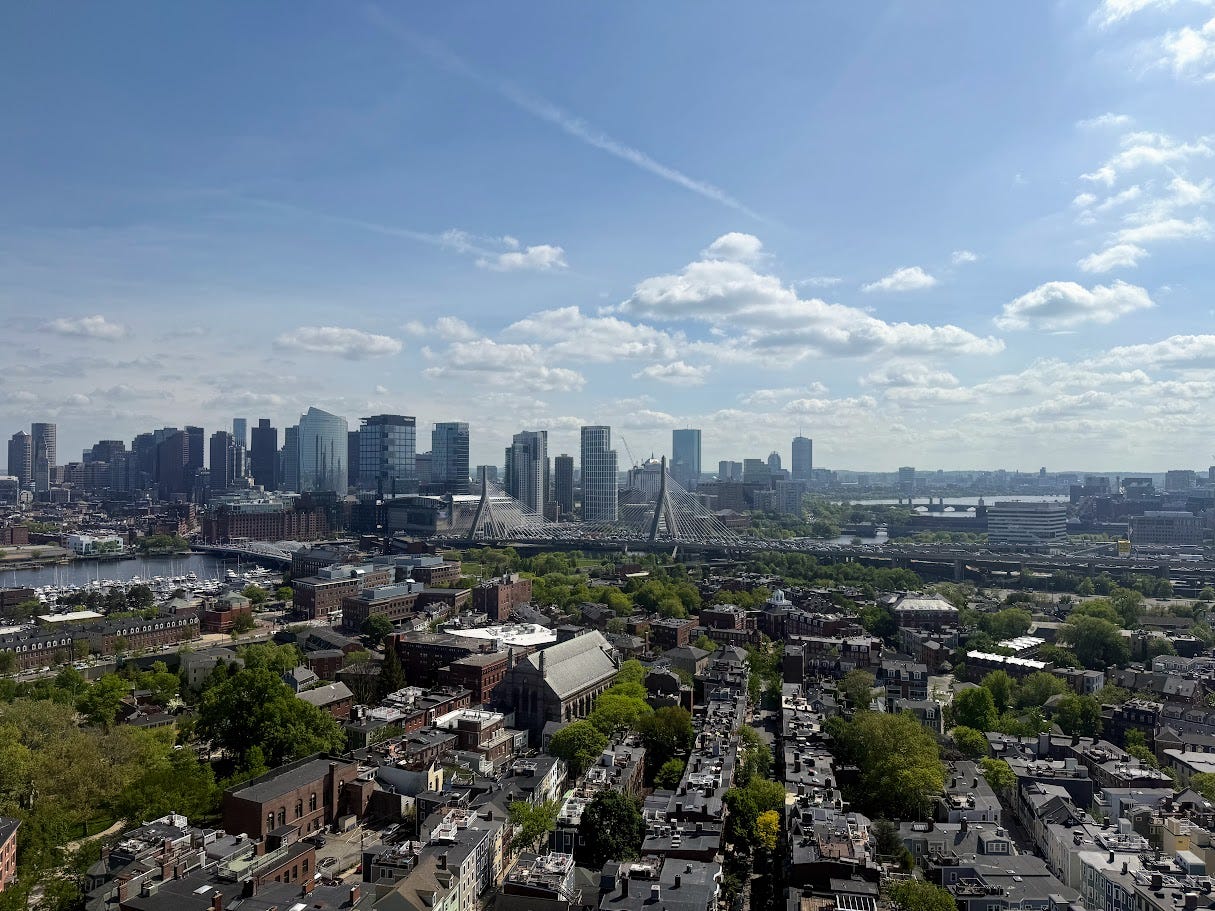Should "Abundance" come for higher education?
Plus: Dueling legislative proposals on higher education accountability, and investigating the Ivy League.
A few weeks ago, I ordered Ezra Klein and Derek Thompson’s new book, Abundance, to make a minimum dollar amount for free shipping on Amazon. I’d followed the discourse about the book and thought I’d see what all the fuss was about. Abundance argues that overregulation has hamstrung progressive priorities. Though the government has poured trillions into liberals’ favored projects—housing, green energy, high-speed rail, and others—much of that investment has come to naught, the victim of red tape.
Overall, I find myself in alignment with the thesis—even if I think Klein and Thompson have too rosy a view of government’s capacity to ever do things efficiently. But I also thought that higher education would fit nicely into the authors’ argument. Overregulation has made it hard to start new colleges and expand high-value programs of study—and the consequences for students are fewer opportunities and rising prices.
Why are colleges so darn old?
I lay out this argument in a recent op-ed for RealClearEducation. Today’s colleges are old. Almost all traditional college students today attend an institution created at least half a century ago; new schools are rare. Between 1990 and 2023, the number of students enrolled in nonprofit, degree-granting colleges increased by 32%. However, the number of institutions serving those students barely rose at all.
“Giving people a subsidy for a good whose supply is choked is like building a ladder to try to reach an elevator that is racing ever upward,” write Klein and Thompson. For markets to work, supply must grow to meet rising demand. Otherwise, prices will rise to ration the limited supply available. This story fits the trends we’ve seen in higher education: as institutional entry has remained stagnant, tuition has soared.
Market entry has occurred somewhat among for-profit and nondegree-granting schools, which generally operate under a different regulatory regime than traditional colleges. But when we look at institutions that represent the typical college experience—public and private nonprofit colleges that grant degrees—we see wholly inadequate market entry.
Red tape in higher ed
Aspiring new colleges have many hoops to jump through before they can enroll students. Colleges first need a green light from the state where they primarily operate. These states typically require new colleges to become accredited, even if they don’t want taxpayer funding. Accreditation agencies impose stringent requirements and significant monetary costs before giving their stamps of approval. Moreover, representatives of existing colleges typically constitute accreditation commissions—meaning new schools must effectively ask their competition for permission to exist.
Consider College Unbound, a startup nonprofit college in Rhode Island aimed at adult learners. The school took five years to earn initial authorization from Rhode Island and ten years for initial accreditation. In part, this was due to pushback from existing institutions in Rhode Island, which have sway over the state’s approval processes. College Unbound faced complaints that it departed from the “traditional” college model. But departing from current practices is how innovation happens.
In a longer white paper on state regulation of higher education, I argue states should focus on ensuring key consumer protections are in place, rather than prescribing how colleges should operate. Regulators should make it simpler to start new schools and programs, but ensure students have a safety net should those schools fail. The U.S. Education Department should also consider approving new accreditors with a less prescriptive oversight model, as my American Enterprise Institute colleague Beth Akers recently proposed.
But the key to unlocking Abundance in higher education is a pro-innovation mindset. Regulation has costs and benefits, and policymakers should recognize that not every additional rule adds value. Fully eliminating risk means throttling the expansion of higher education. “Abundance reorients politics around a fresh provocation: Can we solve our problems with supply?” Klein and Thompson write. Higher education regulators should ask themselves that question.
Read the full op-ed here.
What I’m writing
The Biden administration’s mismanagement of student loans set the stage for the repayment crisis we’re now facing. In a new issue brief for AEI, I walk through the ugly five-year history of the student loan payment pause and the previous administration’s various attempts at loan forgiveness. Millions of student borrowers are now on the verge of default thanks to widespread disengagement from the student loan system, and the crisis has not yet fully come to light.
Is the Ivy League a cartel? The U.S. House Judiciary Committee thinks so. I was honored to provide testimony on the admissions and pricing practices of elite universities earlier this month. Whether Ivy League schools meet the legal definition of a cartel is above my pay grade, but their practices of limiting admissions and charging excessive tuition are damaging nonetheless, given that these schools’ graduates are overrepresented among elites in business, politics, and media.
How the “One Big, Beautiful Bill” would hold colleges accountable. I analyze the student loan “risk-sharing” proposal included in the House’s reconciliation bill. Expensive private universities such as the University of Phoenix and the University of Southern California would pay the highest risk-sharing penalties under the House proposal. Community colleges and public four-year schools in low-tuition states like California and Florida, meanwhile, would come out ahead thanks to a new performance funding program that would reward schools for strong outcomes and low tuition.
The Senate’s strong package of higher education reforms. The Senate released a companion reconciliation proposal last week. Its higher education reforms include commonsense limits on student loans and a new repayment plan that would prevent excessive interest accumulation, mirroring a similar proposal introduced in the House. The Senate bill includes some measures to hold colleges accountable for their outcomes, but they doesn’t go as far as the House plan. I suggest some ways to make the package stronger.
What I’m reading
Chronic absenteeism soared during the Covid-19 pandemic, but schools seem to be allowing chronically absent students to graduate anyway, write my AEI colleagues Nat Malkus and Sam Hollon.
Colleges are dealing with a tidal wave of fake AI students trying to defraud the government of financial aid dollars, writes Beth McMurtrie of the Chronicle of Higher Education.
School districts are spending more money per student—but that hasn’t translated into higher teacher salaries, writes Chad Aldeman for The 74.
The University of North Carolina system is considering starting a new accreditor, reports the News & Observer.
Teacher apprenticeship degrees are gaining steam. The Chronicle offers a deep dive into this innovative new way to prepare teachers for the workforce.
What I’m Doing
I joined Jeff Selingo, Michael Horn, and James Kvaal for a podcast on the current higher education reform efforts in Congress.
I’ve been on the road quite a bit these past few weeks, with personal trips to Boston and Philadelphia and speaking engagements in Raleigh and New Orleans. I snapped this photo of Beantown from the top of the Bunker Hill monument.
I’m looking forward to some hiking trips next month—I’m planning to hit the trails in Banff and Maine. Hopefully I’ll be able to snag my 40th state highpoint in the Pine Tree State. Hopefully I’ll have an update for you soon!






